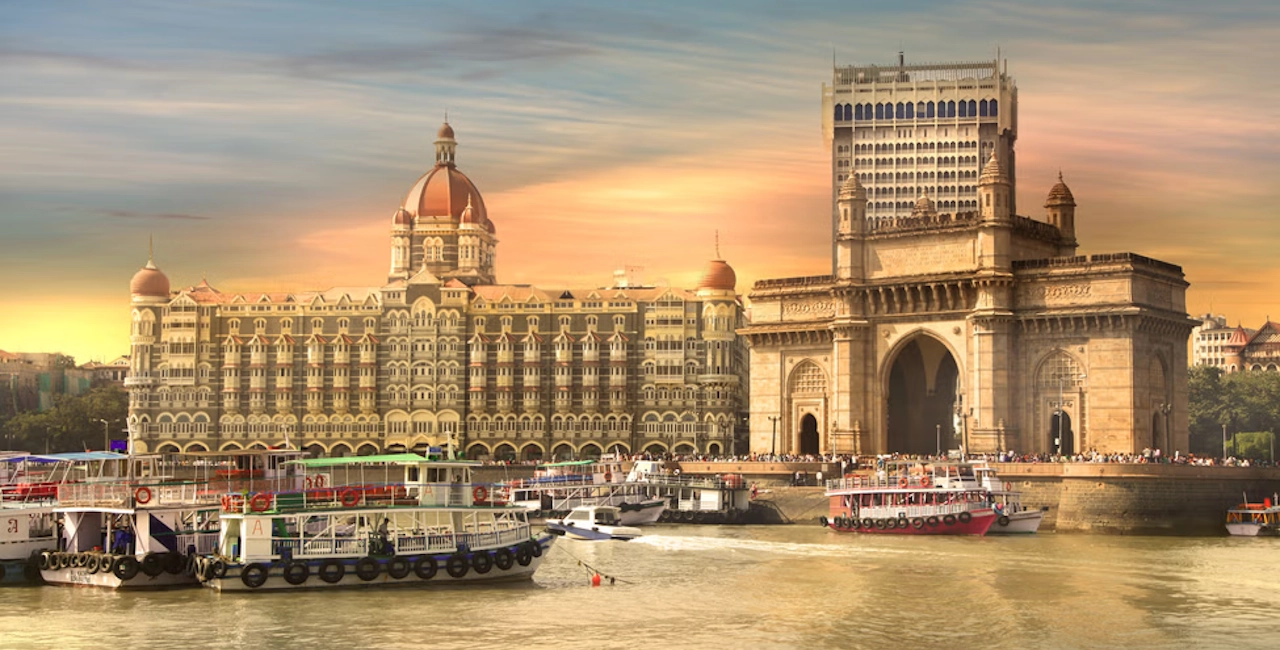Mumbai, often referred to as the “City of Dreams,” is a bustling metropolis on the western coast of India. As the capital of Maharashtra and the financial capital of the country, Mumbai is a city that never sleeps, embodying the spirit of ambition, diversity, and resilience. With its rich history, cultural vibrancy, and economic dynamism, Mumbai is a city that captivates and challenges in equal measure.
Historical Significance and Evolution
Mumbai’s history is as layered and diverse as the city itself. Originally a cluster of seven islands inhabited by the Koli fishing community, Mumbai has undergone a remarkable transformation over the centuries. The city’s name is derived from “Mumbadevi,” the patron goddess of the Kolis, and “Aai,” which means mother in Marathi. The islands were ceded to the Portuguese in 1534 and later to the British as part of the dowry of Catherine of Braganza when she married Charles II of England.
Under British rule, the city was transformed into a major port and commercial hub. The reclamation of land, beginning in the 19th century, merged the islands into the landmass that forms modern Mumbai. The construction of key infrastructure projects, such as the railway network and the Gateway of India, further established Mumbai as a central node in the British Empire’s colonial trade network.
Post-independence, Mumbai continued to grow, attracting people from all over India, making it a melting pot of cultures, languages, and traditions. Today, the city is home to over 20 million people, making it one of the most populous cities in the world.
Economic Powerhouse
Mumbai’s status as the financial capital of India is underscored by its role in the country’s economy. The city is home to the Bombay Stock Exchange (BSE), the oldest stock exchange in Asia, and the Reserve Bank of India. It also houses the headquarters of numerous multinational corporations, Indian conglomerates, and financial institutions. The city’s economy is diverse, with significant contributions from finance, IT, manufacturing, healthcare, and the entertainment industry.
The Mumbai Port and Jawaharlal Nehru Port are vital gateways for international trade, handling a significant portion of India’s cargo traffic. The city’s role as an economic hub is also evident in its bustling markets, such as the iconic Crawford Market, and its status as the headquarters for India’s booming retail and real estate sectors.
Cultural Melting Pot
Mumbai’s cultural vibrancy is unparalleled. As a city that has attracted migrants from across India and beyond, Mumbai is a microcosm of the country’s diverse cultures. This diversity is reflected in the city’s festivals, food, languages, and everyday life.
Ganesh Chaturthi, the city’s most famous festival, sees Mumbai come alive with color, music, and devotion as thousands of idols of Lord Ganesha are installed in homes and public spaces. Other festivals like Diwali, Eid, Christmas, and Holi are also celebrated with great enthusiasm, highlighting the city’s inclusive spirit.
Mumbai’s food scene is a testament to its cultural diversity. From the humble vada pav, often referred to as Mumbai’s burger, to the spicy pav bhaji and the delectable seafood dishes influenced by the coastal Konkani cuisine, the city offers a culinary journey like no other. The streets of Mumbai are lined with food stalls, cafes, and fine dining restaurants that cater to every palate and budget.
The city’s cultural richness is also evident in its arts and entertainment scene. Mumbai is the birthplace of Bollywood, India’s prolific film industry, which produces more films than any other city in the world. The influence of Bollywood on the city’s identity is profound, with the glamour of film stars, the allure of movie premieres, and the rhythm of Bollywood music ingrained in the city’s fabric. In addition to cinema, Mumbai is also a hub for theater, with venues like Prithvi Theatre and the National Centre for the Performing Arts (NCPA) hosting a variety of performances, from classic plays to contemporary dance.
Architectural Marvels and Urban Landmarks
Mumbai’s skyline is a blend of colonial-era architecture, modern skyscrapers, and traditional structures. The Gothic Revival style of the Chhatrapati Shivaji Maharaj Terminus (formerly Victoria Terminus) and the Art Deco buildings along Marine Drive are testaments to the city’s architectural heritage. These landmarks have earned Mumbai a place on the UNESCO World Heritage list.
The Gateway of India, a colonial-era monument overlooking the Arabian Sea, is one of the city’s most iconic symbols. Built to commemorate the visit of King George V and Queen Mary to India in 1911, the Gateway stands as a reminder of the city’s historical significance. Other notable landmarks include the Haji Ali Dargah, an Islamic shrine located on an islet in the Arabian Sea, and the Siddhivinayak Temple, dedicated to Lord Ganesha.
Mumbai’s urban landscape is also characterized by its bustling neighborhoods, each with its own unique charm. From the colonial elegance of South Mumbai’s Fort area to the vibrant street life of Colaba, the trendy cafes and boutiques of Bandra, and the upscale residences of Malabar Hill, Mumbai’s neighborhoods offer a glimpse into the city’s eclectic character.
Challenges and Resilience
Despite its many attractions, Mumbai is a city of contrasts. The rapid urbanization and population growth have led to significant challenges, including overcrowding, traffic congestion, and inadequate infrastructure. The city is also home to Asia’s largest slum, Dharavi, which is a stark contrast to the wealth and luxury found in other parts of the city. However, Dharavi is also a thriving hub of small-scale industries and entrepreneurship, reflecting the resilience and resourcefulness of its residents.
Mumbai’s spirit of resilience is legendary. The city has weathered numerous challenges, from devastating floods to terrorist attacks, yet it continues to thrive. The phrase “Mumbai meri jaan” (Mumbai, my life) encapsulates the deep bond that residents share with the city, a testament to its enduring appeal.
Conclusion
Mumbai, with its dynamic economy, cultural richness, and indomitable spirit, truly deserves its title as the “City of Dreams.” It is a city that embraces everyone, offering opportunities for growth and the promise of a better future. Whether you are drawn by its history, its entertainment industry, or its vibrant street life, Mumbai is a city that leaves a lasting impression, inviting you to be a part of its never-ending story of growth and reinvention.


0 Comment